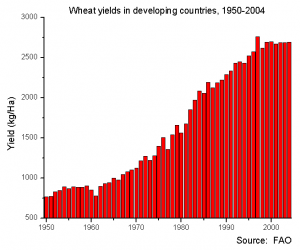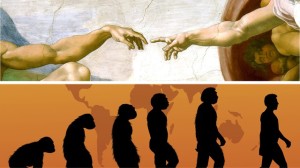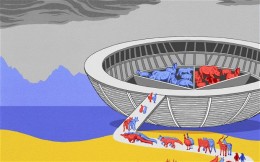Disclaimer: If you do not like sarcasm, you may find it difficult to get through this. I understand your point of view. But please note that I sass with love.
I recently stumbled upon the idea, from an OW supporter, that the OW movement simply wants the prophet to pray about Mormon women in the priesthood. They just want some updated revelation. This was of course surrounded by others saying that women “need” the priesthood for eternal progression (I won’t quibble about that today) and women have the “right” to the priesthood (ditto). However, let’s take for a moment the idea that all that OW wants is for the prophet to hear their concerns and pray on their worries. Let’s say that all the people who say women need, want, and have the right to the priesthood are just miscommunicating their desire to get the prophet to pray for revelation. There is a scriptural tradition for such requests in ancient and modern texts.
In this case, I hate to tell you, but OW you are going about it in all the wrong ways. Nate Oman discussed to this in his poorly received (at least by OW) article on why the movement is currently set up for failure. But I can tell you one reason why you are doing it wrong: I had no idea you just wanted more revelation. In fact, I thought you only wanted one particular revelation, if that, otherwise you just wanted ordinations to begin yesterday.

Now, I may just start rehashing some of the things Nate and my husband have already said, but I hope I can bring a little more to the discussion. First of all, I am a woman, so my anatomy does not disqualify me from disagreeing with other women (truth). Secondly, I have children, so I speak for all mothers (sarcasm). Third, I am getting my PhD in a science, so I am liberated, intellectual, academic, and logical, and I speak for all the people who are or prefer those things (again, sarcasm). I also grew up in a household that was technically without the priesthood: yes my mom was a working single mother, I was the product of, whisper it with me now, divorce, and there were no boys to hold up the mantle. (But I could go on and go on about the many incredible, humbling, and teaching ways the priesthood blessed my family, headed by a divorced single mother with cancer, but I will save that for next time.)
Let me explain how the OW movement looks through the eyes of this tired, stressed-out mother and PhD student, who grew up in a completely imperfect Mormon home located in the South. I realize that many people are invested in this movement, and any negative thing I say will sting. I understand. When I received the first draft of my Honors thesis back from my undergraduate advisor, which looked like he had gleefully bled all over every. single. page. I was devastated; like someone had handed me back my baby and said, “Actually, she’s hideous.” So with that in mind, I say, the OW movement appears to be a media-hungry enterprise that cares more about acceptance from the world than working together with the everyday Mormon woman and is solely seeking for everyone, including the prophet, to confirm that its opinions are right. Phew, I know, that came out strong. Commence picking it apart!
Really though, I’m not saying this is what the movement is, or that any particular member feels that way. But, overall, this is how it appears to me. When you have the media discussing what is a very personal and spiritual part of doctrine, when there are more spotlights on Kate Kelly than I can count, when you don’t go through the grass root efforts of talking with sisters who disagree (or at least don’t talk to them kindly or with respect), when you reciprocate the church’s “I’m a Mormon” campaign for a cause, when you have members who very much appear to be making demands (beyond asking for a prayer) from the prophet, it makes me very uncomfortable.
I think part of the problem is that a grass roots effort, something akin to a letter writing campaign, would appear to have much less effect than if we can get the NYT talking about it (although I truly believe the prophet would respond to a heartfelt call from the sisters). As statistics have shown, Mormon women, in general, don’t want the priesthood. Most women see it more as a responsibility and less as an opportunity, and we’ve already got a lot on our plates. There may even be some women who take a don’t-tempt-fate attitude towards asking for the priesthood. I know sometimes I avoid praying for service when I’m really busy, sometimes I do it anyway because I don’t know how I’ll survive without the blessings providing services brings. And I know recently when our family had some financial struggles, we were blessed not with our dollar stretching further, but with the opportunity to stretch our work hours even longer.
So, OW, if you really want to be the messengers for women who just want the prophet to request revelation, I have a few suggestions for you.
First, unify your message. Don’t get caught up in what the world wants to say about the oppression of women in our completely backwards (to them) religion. Don’t demand, plead. The Lord cares about your pains and your desires, but it’s hard for some of us other Mormons to understand what you’re really asking for, if simple revelation is really what you want. In fact, I could maybe get behind a simple desire for a current prophetic response, if I’m in an OK-to-tempt-fate mood. And there is common ground between us for more sensible participation by women throughout the church, regardless of our desire for the priesthood.
Second, ban the hate-filled comments towards those who disagree. It may be true that some of us don’t understand what you are really asking for, but that doesn’t mean we just don’t know what’s best for us. That doesn’t mean we don’t understand our place in the world, the church, and our home. That doesn’t mean we don’t care about you or are distracted by some nebulous patriarchy. We are strong, loyal, and faithful women trying to make it right for our families through this crazy world. We are all in this together, even if we don’t always agree on the same means.
Finally, turn your purpose to service. If women are hurting and they feel having the priesthood will solve that hurt, help us help them. Help us alleviate their pain and suffering. We can’t give them the priesthood, but we can serve them. Please, teach us how to serve these women, and let us serve you. It has to go beyond a catchy “How Not to Speak to Mormon Feminists” and into actual deep caring for one another. The Relief Society has all the potential to allow us to constantly uplift each other, let’s harness that across the divide of OW.








